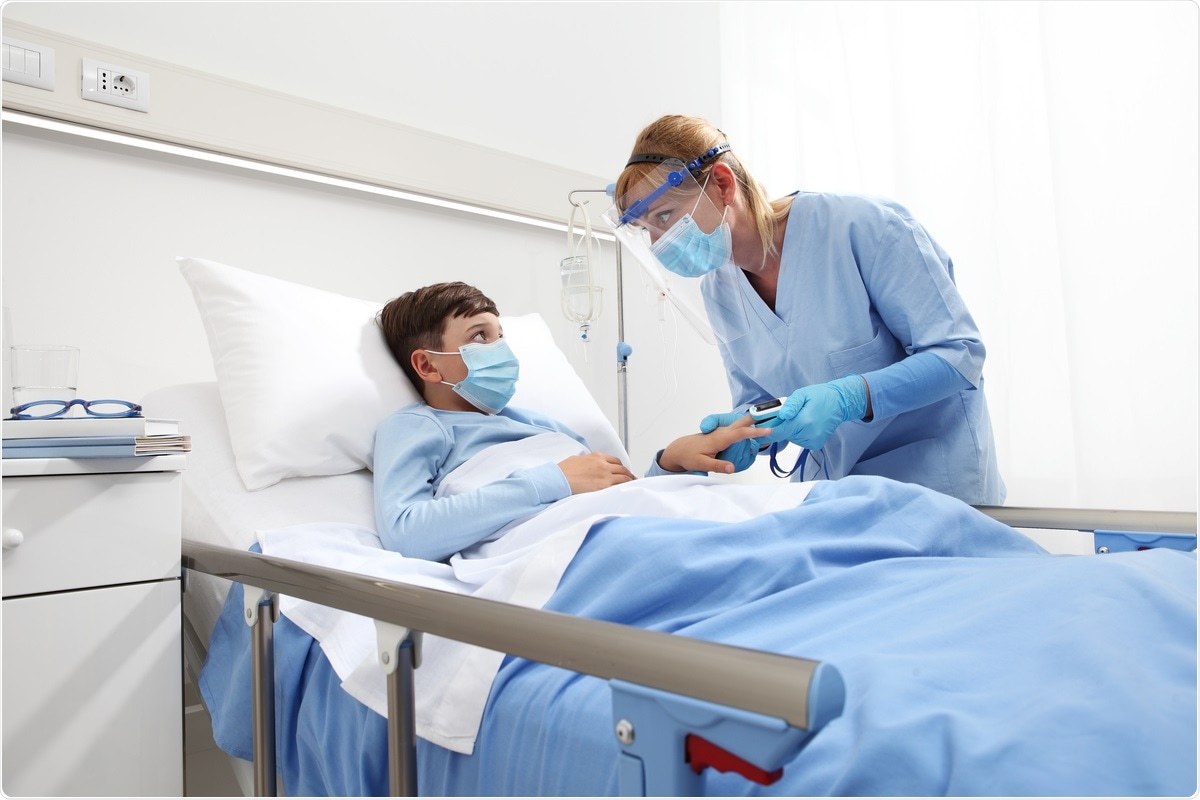A multinational study describing acute and fatal coronavirus disease 2019 (COVID-19) among children over a range of countries during 2020 shows that severe pediatric COVID-19 has significantly higher mortality than previously reported, especially among children below the age of two years.

Background
Over the first year of the COVID-19 pandemic, children have been an age group with notably lower rates of hospitalization or intensive care unit (ICU) admission relative to adults. However, a third of hospitalized children do require ICU admission. Overall, COVID-19 mortality rates are low in children.
The current study, available as a preprint on the medRxiv*server, examines children in pediatric ICU (PICU) care. The researchers collated data on the presentation, management, and outcomes of children from low- and middle-income countries (LMICs) and high-income countries suffering from COVID-19.
Previous research found that over 90% of deaths from COVID-19 in children were in LMICs, especially below the age of one year. This is possibly due to differences in immune function, being coronavirus-naïve, and a lower incidence of multisystem inflammatory syndrome in children (MIS-C), which has been linked to lower mortality.
How the study was conducted?
The researchers designed a prospective observational study to compare the clinical features and management of critical COVID-19/MIS-C among children with different age groups, from LMICs and HMICs in the Americas and Europe.
All the 557 participants were below 19 years, had laboratory-confirmed current or prior infection with severe acute respiratory syndrome coronavirus 2 (SARS-CoV-2), and were hospitalized primarily with COVID-19. All had severe or critical COVID-19 or MIS-C.
What did the study show?
The researchers found 433 children with critical COVID-19, 76 with severe disease, and 48 in the PICU. The median age was eight years, and approximately 60% were male, and approximately two in three were from Latin America. Over half had other medical conditions, mostly heart disease or malnutrition, or asthma or obesity in younger and older children, respectively.
Younger children presented earlier with more respiratory symptoms and higher rates of viral pneumonia. Thus, invasive mechanical ventilation (IMV) was used more often in younger children. However, fewer had gut symptoms, fever, or mucocutaneous features.
Older children had a higher risk of abnormal laboratory findings, including markers of inflammation and higher rates of acute kidney injury. Vasopressors were more often used in older children, who also showed greater systemic inflammation. This group had higher treatment rates with prophylactic anticoagulation, antiplatelet therapy, and intravenous immune globulin (IVIG).
Steroids were used twice as often for lower respiratory symptoms, compared to 20% of other patients. Their use did not vary with age, though methylprednisolone was used more often with older children.
Younger children had higher mortality rates. In 85% of cases, death was associated with cardiac arrest. Risk factors for death included other respiratory and cardiac illnesses, malnutrition and, admission with hypoxemia or lung symptoms. Conversely, treatment with IVIG, the presence of MIS-C, and presentation with mucocutaneous or gut symptoms carried a lower mortality risk.
As expected with these risk factors, older child mortality was lower among those who received methylprednisolone, prophylactic anticoagulants, and IVIG or presented with MIS-C or similar symptoms.
What are the implications?
The risk of death was higher among younger children less than two years of age due to other illnesses, primarily respiratory diseases. The study shows that, unlike earlier studies mostly from HMICs, pediatric critical COVID-19 in LMICs may be associated with death in up to a tenth of cases.
The higher mortality may be explained by including only high-risk and gravely ill children in this study. Age-related differences were observed, including a lack of effect of some therapies on the mortality risk in younger children. Acute organ dysfunction in younger children also carried a higher risk of death.
The increased use of IMV in young children may have contributed to mortality in this group, especially because of its iatrogenic complications. While this intervention may have been due to the respiratory symptoms and hypoxia at presentation in these children, it can cause cardiac arrest without adequate resources.
The study draws attention to the need to improve the management of critical COVID-19 in children, rather than focusing only on the novel MIS-C, since the former causes higher mortality. Vaccination of children is as yet unapproved, while vaccine supplies in most LMICs are limited. The management of critical pediatric infections will require further study to evolve optimal guidelines.
*Important notice
medRxiv publishes preliminary scientific reports that are not peer-reviewed and, therefore, should not be regarded as conclusive, guide clinical practice/health-related behavior, or treated as established information.
- Gonzalez-Dambrauskas, S. et al. (2021). Pediatric Critical COVID-19 And Mortality In A Multinational Cohort. medRxiv preprint. doi: 10.1101/2021.08.20.21262122 https://www.medrxiv.org/content/10.1101/2021.08.20.21262122v1.full
Posted in: Child Health News | Medical Science News | Medical Research News | Disease/Infection News
Tags: Acute Kidney Injury, Asthma, Cardiac Arrest, Children, Coronavirus, Coronavirus Disease COVID-19, Fever, Heart, Heart Disease, Hypoxemia, Hypoxia, Inflammation, Intensive Care, Kidney, Laboratory, Malnutrition, Mortality, Obesity, Pandemic, Pneumonia, Research, Respiratory, SARS, SARS-CoV-2, Severe Acute Respiratory, Severe Acute Respiratory Syndrome, Syndrome, Vaccine

Written by
Dr. Liji Thomas
Dr. Liji Thomas is an OB-GYN, who graduated from the Government Medical College, University of Calicut, Kerala, in 2001. Liji practiced as a full-time consultant in obstetrics/gynecology in a private hospital for a few years following her graduation. She has counseled hundreds of patients facing issues from pregnancy-related problems and infertility, and has been in charge of over 2,000 deliveries, striving always to achieve a normal delivery rather than operative.
Source: Read Full Article
